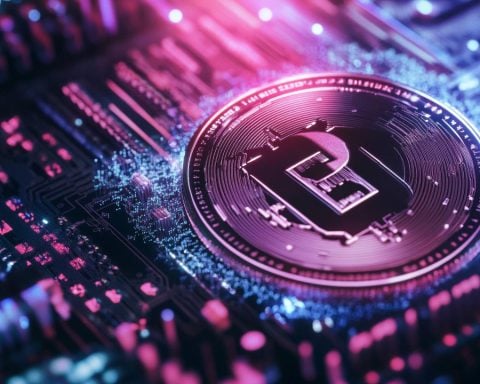Cryptocurrency mining is often shrouded in mystery and technical jargon, but it’s a fascinating process that involves creating new digital coins. So, how exactly does this work? At its core, crypto mining is the process by which transactions for various forms of cryptocurrency are verified and added to the blockchain ledger.
To understand mining, it is essential to grasp the concept of the blockchain, the backbone of cryptocurrencies. The blockchain is a decentralized ledger that records all transactions across a network of computers. Miners play a crucial role in this process by solving complex mathematical problems that allow them to add a new block to the chain.
Mining requires significant computer processing power and energy. Miners use powerful hardware, such as Application-Specific Integrated Circuits (ASICs) or Graphics Processing Units (GPUs), to perform calculations rapidly. As a reward for their efforts and resources, miners receive a share of the cryptocurrency they are mining, which serves as an incentive for continued participation and security of the network.
However, mining is not just about earning new coins. It’s about maintaining the integrity and security of the blockchain. Each transaction is validated and confirmed by multiple miners before it can be added to the ledger, making it almost impossible to alter recorded transactions.
Though lucrative in concept, crypto mining can be challenging, as difficulty levels vary across different currencies and adjust based on the total computational power used by miners. Despite these challenges, the allure of potential rewards continues to attract individuals and companies to the practice.
The Hidden Impact of Cryptocurrency Mining on Global Communities
There’s more to cryptocurrency mining than meets the eye. Beyond the allure of digital coins and the complexity of blockchain technology, this burgeoning industry has profound implications for people, communities, and nations worldwide.
Environmental Concerns
One of the most controversial aspects of crypto mining is its environmental impact. Mining operations consume vast amounts of electricity, often sourced from fossil fuels, leading to increased carbon emissions. According to recent studies, Bitcoin mining alone could produce as much CO2 annually as a large city.
Societal Shifts
Interestingly, mining has also led to societal shifts. Regions with abundant, low-cost energy have experienced economic booms, as miners flock to these areas, driving up electricity demand and prices. In Iceland, for instance, the energy demand for mining operations has surged past household consumption, creating a strain on local resources.
Regulatory Responses
Governments around the world are responding to these developments in varied ways. Some, like China, have cracked down on crypto mining due to its massive power usage, while others encourage the influx of tech investment, betting on future returns. These regulatory differences have sparked debates about the role of cryptocurrency in national economies.
How Does Crypto Mining Work?
Crypto mining involves validating transactions and adding them to the blockchain. Powerful computers solve intricate problems, and miners are rewarded with cryptocurrency. This decentralized verification ensures the security and integrity of the blockchain.
To learn more about the intricate world of cryptocurrencies, explore platforms like Coinbase or Binance.
















